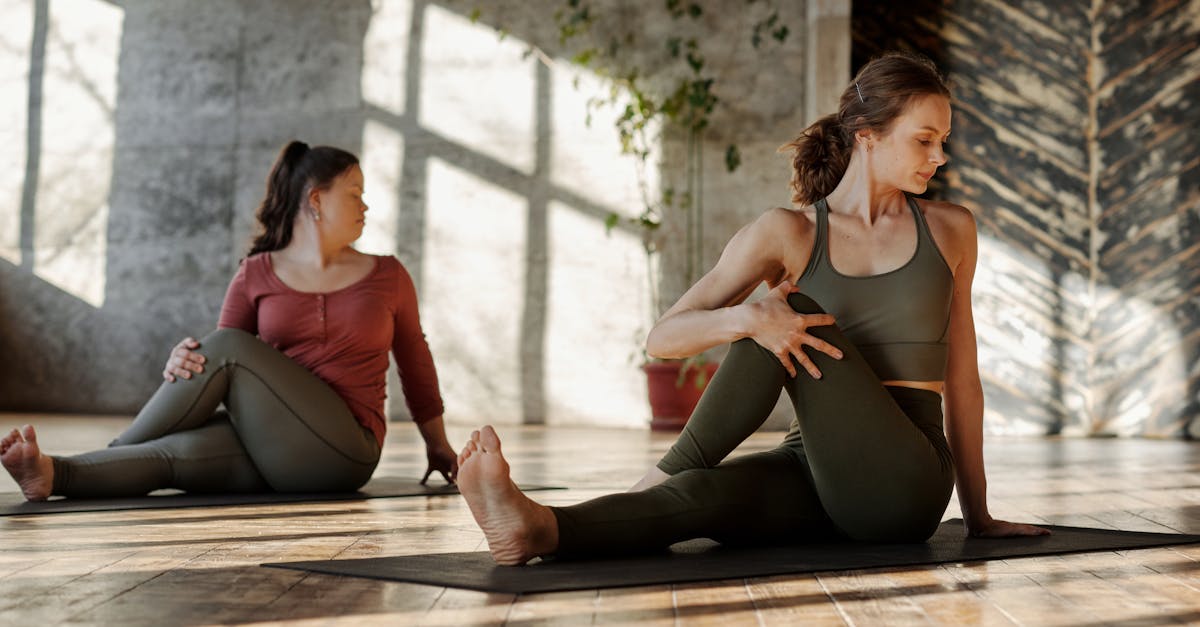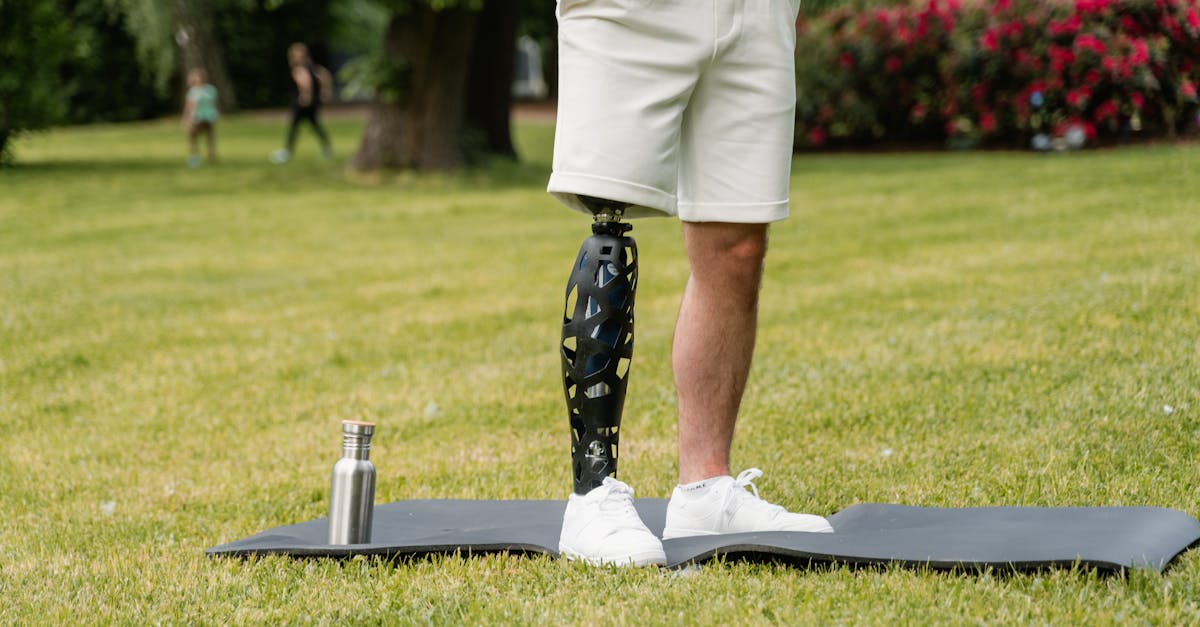Suffering from bad posture at your standing desk? You’re not alone!
In Short: Posture correction causing you discomfort and fatigue? Improve posture and enhance your well-being with our top 5 tips for optimal posture at your standing desk. These strategies, focusing on ergonomics and mindful movement, can help alleviate issues like forward head posture, rounded shoulders, and swayback posture. Pulse Align emphasizes small adjustments that lead to significant results, ensuring you feel stronger and more aligned throughout your workday. Reclaim your health and wellness at Pulse Align Clinics. Book your appointment today!
Are you struggling with lower back pain and poor posture?
Discover Pulse Align’s top 5 tips for optimal posture at your standing desk, aimed at correcting bad posture and enhancing overall well-being. Studies show that a significant percentage of adults suffer from forward head posture, rounded shoulders, and other postural issues. Implementing proper ergonomics and incorporating techniques such as yoga for posture, stretching exercises, and core strengthening can effectively improve posture correction, alleviating discomfort and preventing conditions like kyphosis and lordosis. By engaging in mindful movement and utilizing methods such as the Alexander Technique or Feldenkrais Method, you can reclaim your alignment and experience relief from symptoms associated with standing desk usage.

5 Tips for Optimal Posture at Your Standing Desk, Backed by Pulse Align
In our fast-paced world, posture improvement has become essential for maintaining overall well-being, especially when working at a standing desk. As more individuals embrace this ergonomic option, it is crucial to understand the ways we can enhance our posture and support our neuromuscular recalibration efforts. Discover how small changes can lead to big benefits in your daily routine.
Understanding Posture and the Role of Pulse Align
Being aware of your posture is vital for achieving muscle tone symmetry, which can help restore natural balance within your body. At Pulse Align, we provide a gentle, non-invasive approach that utilizes gentle stimulation techniques to promote overall well-being. Our methodology is designed to support the body’s natural processes, ultimately allowing clients to experience greater comfort and improved posture.
The Holistic Benefits of a Natural Approach
Many clients have integrated our services into their wellness journeys, embracing the holistic benefits that Pulse Align offers. By focusing on improving alignment and symmetry, you may notice a natural reduction in discomfort and an enhancement in flexibility. With consistent practice of posture exercises, clients find themselves feeling more aligned and energetic throughout their workday, as well as experiencing increased productivity.
Client Experiences That Inspire
One client shared, “Since adopting the standing desk tips recommended by Pulse Align, I have managed to improve my posture naturally and found that my neck discomfort has significantly decreased. I never realized how much small adjustments could change my day!” These testimonials reflect not just successful posture correction, but highlight the lasting impact that a gentle, mindful approach can have on daily life.
Take Action and Discover Pulse Align
If you are ready to explore how to enhance your posture while using a standing desk, consider booking a consultation with Pulse Align today. Our services are tailored to every member of the family, including children and pregnant women, ensuring that everyone can benefit from our natural approach. Find a Pulse Align clinic near you in Montreal, La Prairie, Terrebonne, Chicoutimi, Charlesbourg, Saint-Jérôme, Châteauguay, Sainte-Marie, Les Escoumins, Granby, and Panama City. Remember, Pulse Align complements healthcare services but does not replace them—supporting your pursuit for a balanced and healthier life.
Top 5 Tips for Optimal Posture at Your Standing Desk, Endorsed by Pulse Align
- Adjust Desk Height: Ensure your desk is at elbow level for ultimate comfort.
- Monitor Position: Keep your screen at eye level to prevent neck strain.
- Use an Ergonomic Chair: Support your lower back with appropriate seating while sitting.
- Take Frequent Breaks: Stand up and move for a few minutes every 30 minutes to enhance circulation.
- Wear Supportive Footwear: Opt for shoes that provide proper arch support when standing.

Top 5 Tips for Optimal Posture at Your Standing Desk, Endorsed by Pulse Align
In today’s fast-paced environment where many individuals are transitioning to standing desks, the importance of posture improvement cannot be overstated. Bad posture can have a detrimental effect on both physical comfort and overall well-being. This article explores five effective strategies to achieve proper posture, focusing on the principles of neuromuscular health and holistic recalibration, as supported by Pulse Align.
1. Adjust Your Desk Height for Proper Ergonomics
One of the first steps to improve posture is to ensure your desk is set at the appropriate height. Your elbows should be bent at a 90-degree angle when typing. An improper desk setup can lead to anterior pelvic tilt and discomfort, impacting your nervous system. Adjusting to the right height helps maintain a neutral spine, reducing the risk of conditions like kyphosis or lordosis.
2. Mind Your Monitor Position
Positioning your monitor at eye level is essential to avoid forward head posture. A tilted screen can strain your neck over time, contributing to rounded shoulders. Regularly assessing your monitor height encourages better alignment and supports healthy posture while you work. This simple adjustment can greatly enhance your productivity and comfort throughout the day.
3. Incorporate Movement Breaks
Standing for long periods without movement can lead to stiffness. Taking short breaks every 30 minutes can promote mindful movement and circulation. Consider performing simple stretching exercises or dynamic movements like stance changes or gentle leg lifts. These practices help combat swayback posture and keep your body engaged during work hours.
4. Engage in Posture Exercises
To maintain good posture, integrate specific posture exercises, such as yoga for posture or Pilates for posture. These activities emphasize core strengthening and flexibility, fortifying your body’s alignment. Incorporating trunk exercises can effectively support structural balance, combating misalignments like scoliosis and improving your overall posture.
5. Utilize the Alexander Technique and Feldenkrais Method
Both the Alexander Technique and Feldenkrais Method promote self-awareness and body movement understanding. These techniques help develop better posture by encouraging proper body alignment and reducing unnecessary tension. Regular practice can cultivate lifelong habits beneficial for maintaining a balanced posture, enhancing overall well-being.
Conclusion: Embrace a Healthier Workspace
Improving your posture at a standing desk can significantly impact your daily life and overall health. By incorporating these five tips, you are taking steps towards greater posture correction and enhanced well-being. At Pulse Align, we invite you to book a consultation to explore personalized exercise plans tailored to your needs. Uncover the benefits of shockwave therapy and proactive strategies to elevate your posture and health. Join us on the journey to reclaim your vitality and live a more balanced life.
| Tip | Description |
|---|---|
| 1. Ergonomic Setup | Ensure desk height aligns with elbows at a 90-degree angle to promote comfort and balance during use. |
| 2. Monitor Position | Place the monitor at eye level to maintain natural neck alignment, fostering ease of motion. |
| 3. Anti-Fatigue Mats | Utilize cushioned mats to minimize foot fatigue, enhancing comfort while encouraging a mindful experience. |
| 4. Frequent Movement | Incorporate micro-breaks every 30 minutes to refresh and promote better circulation in your body. |
| 5. Stretch Integration | Engage in simple stretching exercises throughout the day to release tension and support balanced posture. |

Transformative Wellness: Client Testimonials on Optimal Posture at Your Standing Desk
“Since incorporating the 5 Standing Desk Tips for Optimal Posture, I have experienced remarkable changes in how I feel throughout the day! In La Prairie, I struggled with lower back pain while working, but after following Pulse Align’s guidance, I’ve noticed a significant reduction in discomfort. Their holistic approach truly allows my body to recalibrate naturally, promoting a feeling of strength and stability.” – Marie D.
“Living in Mont-Royal, I never realized how much my posture at the standing desk affected my daily life until I sought help from Pulse Align. Their tips emphasized proper ergonomic setup and mindful movement, which helped me alleviate the tension in my neck and shoulders. Now, I feel more aligned and energized at work!” – Kevin S.
“The community at Terrebonne has greatly benefited from Pulse Align’s unique philosophy on posture. After integrating their tips, I felt my chronic discomfort transform into ease. It’s inspiring to work with a service that supports the body’s innate ability to restore balance naturally, making the journey to wellness so much more achievable.” – Sophie L.
“In Sainte-Marie, I’ve always been mindful of my health, but Pulse Align introduced me to exercises that truly made a difference. Their focus on incorporating movement into my standing desk routine led to increased productivity and reduced fatigue. It’s incredible to see how small adjustments lead to significant wellbeing!” – Marco T.
“Clients in Chicoutimi have shared similar experiences as well. They appreciate how Pulse Align fosters an environment for holistic recovery, enabling us to feel better naturally. I’ve noticed improvements in my posture and an overall uplift in my energy levels. The 5 standing desk tips have been a game-changer for my daily routine, and I’ve never felt better!” – Claire B.
For those in areas like Châteauguay and Saint-Jérôme, Pulse Align is dedicated to supporting clients and their families on their wellness journeys. I highly recommend them to anyone looking to enhance body function and restore balance through natural recalibration. Visit Our Clinics to find a location near you!” – Thomas A.
Are you suffering from bad posture at your standing desk? You’re not alone. In today’s fast-paced world, the importance of posture improvement cannot be overlooked. With many individuals spending hours at their desks, a common concern has surfaced: How to maintain proper posture while navigating daily tasks? At Pulse Align, we emphasize the role of neuromuscular recalibration as a gentle, holistic approach to fostering overall well-being.
The information and advice provided here do not replace the advice, diagnosis, or treatment of a healthcare professional. Always consult your doctor for any medical questions. For more details, please read our complete Legal Notice.
Maintaining muscle tone symmetry is key to achieving natural balance in your body. By understanding the impact of posture on everyday activities, clients can effectively reduce discomfort and improve their overall quality of life. Pulse Align offers gentle stimulation techniques to help clients establish optimal alignment and support natural bodily functions.
Our Mission
At Pulse Align, our mission is to deliver evidence-based, client-centered treatments that address the underlying causes of pain and dysfunction. By integrating advanced techniques and technologies, we strive to empower each person to take control of their health, ensuring a high standard of care, lasting relief, and an improved quality of life.
Clients across diverse regions have shared their inspiring testimonials about their experiences with Pulse Align’s methods. Many have reported remarkable improvements in their overall well-being by embracing our recommendations. By implementing proper ergonomics, engaging in posture exercises, and fostering mindful movement, individuals can reclaim their health and enhance their productivity at work.
The primary steps to achieving proper posture include adjusting desk height, ensuring monitor position aligns with eye level, incorporating anti-fatigue mats, taking short movement breaks, and regularly assessing your posture throughout the day. These practices will help alleviate symptoms related to conditions such as forward head posture, rounded shoulders, and lower back pain.
If you are interested in exploring how these standing desk tips can benefit you, consider visiting Our Clinics. Pulse Align complements healthcare services but does not replace them, supporting you in your pursuit of a balanced and healthier life. Book your appointment today!
For more information about our approach and available services, visit www.pulsealign.com and find a location near you here: https://pulsealign.com/our-locations/.
Enhance Your Health with TAGMED’s Spinal Decompression Therapy
Discover TAGMED’s advanced Spinal Decompression Therapy, a non-surgical solution specifically designed to address moderate-to-severe disc issues. This evidence-based approach aims to help individuals suffering from chronic pain caused by conditions such as herniated discs, bulging discs, and even spinal stenosis. By gently reducing pressure on the affected discs and nerves, TAGMED’s specialized technique enhances mobility, alleviates pain, and supports your body’s natural healing process. If you’ve reached a plateau with other therapies, see how TAGMED can help you resume an active, comfortable life.
Have you tried conventional treatments and still struggle with persistent back pain due to a severe disc condition?
TAGMED’s neurovertebral decompression applies a controlled, progressive traction force to the spine, effectively increasing the space between vertebrae. This method is critical in reducing pressure on intervertebral discs and nerve roots. Additionally, it promotes better fluid circulation in the targeted area, which helps lower inflammation and relieve pain. This non-invasive solution offers a significant opportunity for those grappling with chronic back pain.
The specific benefits of TAGMED’s technique are notable. It effectively alleviates chronic pain and symptoms linked to conditions like herniated discs or foraminal stenosis. By reducing pressure on nerve structures and optimizing fluid circulation around the discs, this therapy can accelerate recovery and dramatically enhance your quality of life. Patients suffering from conditions such as facet syndrome or degenerative disc disease may find substantial relief and improved functionality following treatment.
When comparing TAGMED’s neurovertebral decompression approach with other treatment options, the benefits become even clearer. Traditional treatments like pain medications, corticosteroid injections, or surgery often involve risks associated with invasive interventions and have certain side effects. In contrast, TAGMED’s method minimizes medication-related risks, providing a potentially safer, faster path to recovery without compromising quality.
Many patients have reported lasting improvements in their conditions thanks to TAGMED’s approach. For instance, one individual shared how their chronic sciatica pain significantly diminished after a series of sessions, enabling them to engage in daily activities they thought lost forever. Another patient with disc bulge stated, “I felt an immediate difference, with reduced pain and greater mobility, thanks to TAGMED.” Such testimonials showcase the tangible results and practical advantages of this therapeutic approach, illustrating how it enables rapid return to a fulfilling lifestyle while diminishing reliance on pharmaceuticals.
As you navigate your journey toward optimal health, consider the benefits that TAGMED’s spinal decompression therapy can offer. With its unique technology and patient-centered care, it stands as a compelling option for those seeking effective, non-invasive solutions to persistent issues related to their spinal health.
Conclusion: Embrace Enhanced Wellness with Pulse Align
For those striving for optimal posture at their standing desks, here are the top 5 tips endorsed by Pulse Align: 1) Ensure your desk height supports a neutral spine; 2) Position the monitor at eye level; 3) Incorporate mindful movement by taking breaks; 4) Use anti-fatigue mats to promote comfort; and 5) Regularly assess your posture. By following these strategies, individuals can experience improved posture, reduced discomfort, increased mobility, and enhanced overall well-being.
At Pulse Align, the focus is firmly on the client. Many have shared positive experiences that highlight the benefits of neuromuscular recalibration. Clients frequently report feeling stronger, more aligned, and energized throughout their day. This positive feedback reinforces our commitment to nurturing a supportive environment that prioritizes your wellness.
If you’re ready to explore how Pulse Align can support your journey toward improved posture and wellness, we encourage you to discover the Pulse Align difference today. Visit our website or schedule your consultation now to take the next step toward a healthier, more balanced life enriched by gentle, non-invasive practices that honor your body’s natural healing abilities. Your path to holistic health is just a click away.

Do you suffer from a chronic condition that responds little or not at all to conservative treatments?
In today’s fast-paced world, many individuals seek non-traditional approaches to enhance their overall wellness. At Pulse Align, we offer an innovative, non-invasive method that helps restore your body’s natural balance and posture through gentle, imperceptible pulses. This gentle stimulation supports the body’s innate ability to recalibrate, which can result in reduced muscle tension and improved comfort while fostering a sense of well-being. Our holistic approach invites clients to embrace a lifestyle centered around optimal posture and functional balance.
At Pulse Align, we understand that our focus is not on discomfort or conditions directly; instead, we prioritize helping the body recalibrate itself naturally. This often leads to remarkable improvements, enabling clients to experience enhanced comfort and posture without invasive measures. By harmonizing muscle tone and symmetry, our approach facilitates the body’s natural processes, leading to a more balanced life.
The personalized method we adopt at Pulse Align is designed to meet the unique needs of each client. Many have shared testimonials about their experiences, highlighting significant improvements in overall wellness and reduced tension. While we emphasize the importance of posture, our clients frequently report positive changes in daily activities, increased energy levels, and a more profound sense of clarity. This client-centric approach reinforces our commitment to supporting your wellness journey in a meaningful way.
If you’re ready to explore how Pulse Align can elevate your well-being, we invite you to visit our website to learn more about our services, find locations in cities like La Prairie, Mont-Royal, Terrebonne, and more. We encourage you to book a consultation for yourself or your family as part of your holistic wellness journey. Remember, Pulse Align complements, but does not replace, medical care, ensuring a balanced approach to your overall health. Experience how we can assist you in rediscovering your optimal posture today!
To learn more about our services and book an appointment, visit our website: Pulse Align.
Frequently Asked Questions
Posture Imbalance, body misalignment
Can wearing orthotics help correct postural imbalance?
Yes, in some cases, orthopedic insoles or braces can help balance the body and reduce compensatory posture patterns.
Can you correct postural imbalance at any age?
Yes, while it’s easier when younger, proper exercises and professional support can help at any stage of life.
Can children suffer from postural imbalance?
Yes, heavy backpacks, poor posture habits, and rapid growth can lead to imbalance in children.
Does being overweight affect posture?
Yes, excess weight, especially around the abdomen, can shift the body’s center of gravity and increase joint strain.
What is postural imbalance?
Postural imbalance is an alteration in the body’s natural alignment, which may cause uneven weight distribution, muscle tension, and pain.
Do sit-stand desks help reduce imbalance?
Yes, alternating between sitting and standing reduces static tension and supports better overall alignment.
How does breathing influence posture?
Proper diaphragmatic breathing supports the trunk and improves alignment, while shallow breathing can increase tension.
Do endurance sports promote better posture?
Some sports like swimming or yoga improve overall muscle tone and support better postural alignment.
Is the Pilates method recommended?
Yes, Pilates builds core strength, improves stability, and can gradually correct postural problems.
Are back strengthening exercises alone enough?
No, it’s important to also strengthen the abdominals, hips, shoulders, and legs to maintain overall muscle balance.
Gabriel Dupuis knows that life’s pains can often be traced back to the way we sit, stand, and move. As a Posture Awareness Advocate at Pulse Align, he’s committed to showing readers how small adjustments in alignment can bring big relief. With a blend of empathy and evidence-based research, Gabriel translates the science of posture into practical steps that help ease discomfort, protect against injury, and restore natural balance. He believes that everyone deserves to feel strong, stable, and pain-free—and through his writing, he offers the guidance and encouragement to help readers reach that goal.
Medical Disclaimer
The information and advice provided on this site do not replace the advice, diagnosis, or treatment of a healthcare professional. Please note that the author of this article is neither a doctor nor a specialist in a medical specialty as defined by the Collège des médecins du Québec. Manual medicine, functional medicine, and sports medicine as described on this site exclude any medical treatment or diagnosis made by a doctor or medical specialist. Always consult your doctor for any medical questions. For more details, please read our complete Legal Notice.




